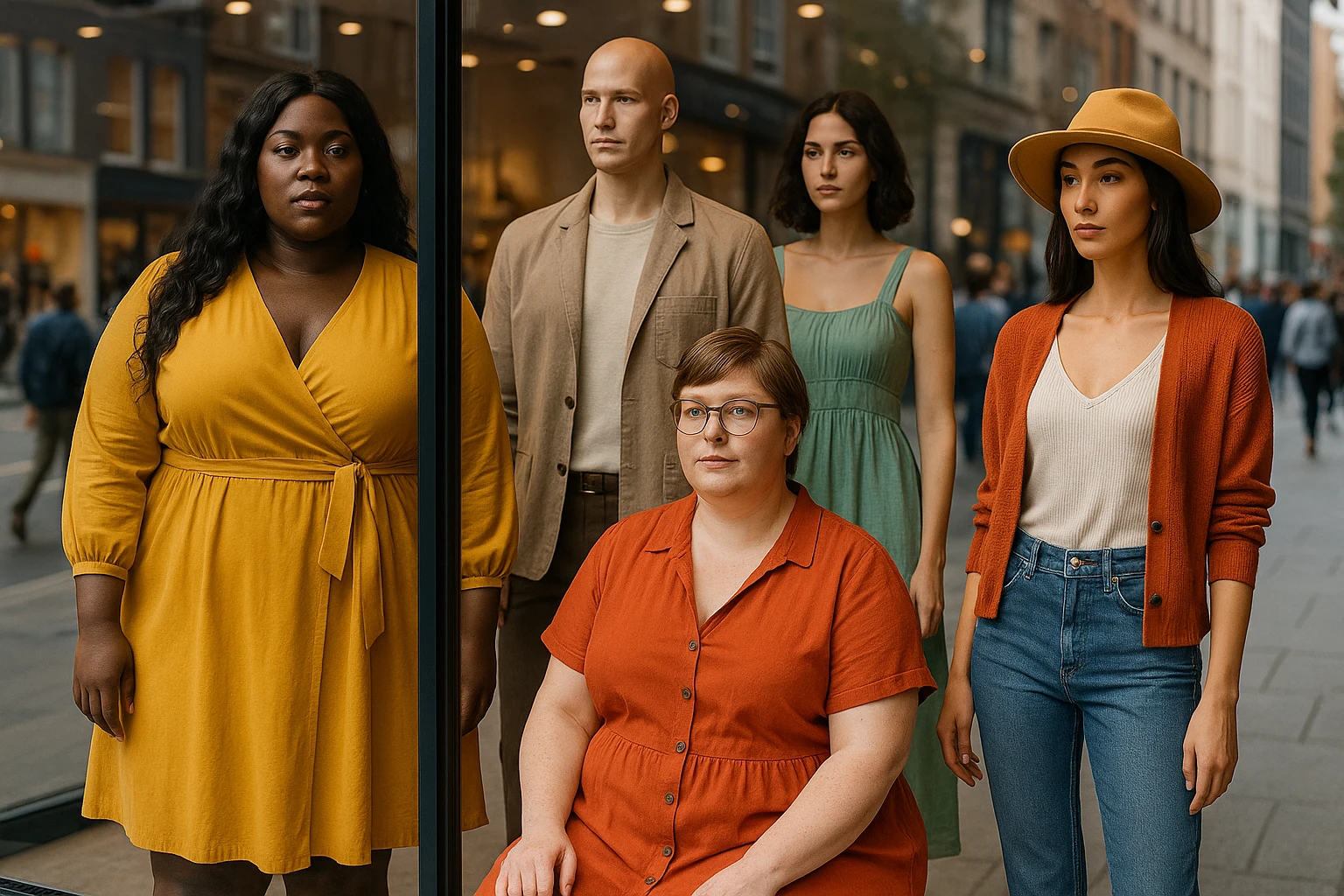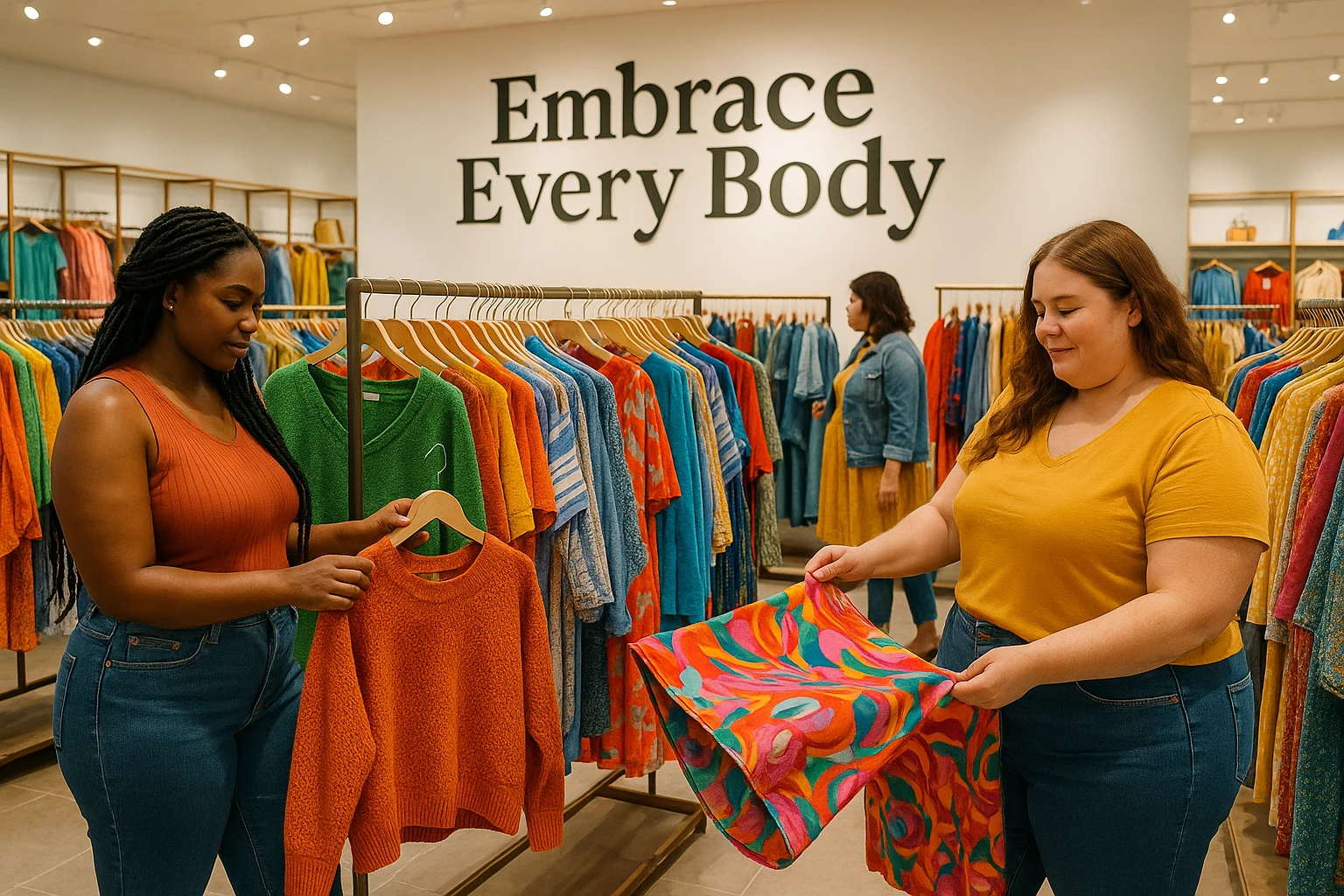
The Ultimate Guide to Size Inclusive Clothing: Fashion for Every Body

Introduction to the Growing Need for Inclusive Apparel
Picture a shopper standing in front of a rack, hopeful to find an outfit that finally fits—not too tight, not too oversized, but crafted with her proportions in mind. For too long, fashion has catered to a narrow subset of body types, leaving a significant number of consumers underserved. Today’s discerning shoppers—empowered by social media and shifting cultural norms—demand **size inclusive clothing** that reflects their realities, not idealized standards.
Recent market data underlines the urgency for change. The global plus-size clothing market has already reached an astounding USD 315.27 billion in 2025, with projections soaring to USD 415.21 billion by 2030 at a compound annual growth rate of 5.67% andcircus.com. In the United States alone, approximately 70% of women wear size 14 or above, and yet representation remains vastly out of step with reality prnewswire.com.
Meanwhile, the disconnect between consumer need and runway visibility remains stark. For Spring/Summer 2026, Vogue Business reported that straight-size looks (US 0–4) still dominate at 97.1% of runway presentations, with plus-size looks just 0.9% and mid-size representing 2% vogue.com. Even small gains year-over-year fail to reflect the growing demand for inclusive designs.
Consider this: a plus-size shopper might turn to big-box brands like H&M, which have expanded their offerings up to 4XL online and enlisted Tess Holliday as a consultant to ensure better fit and representation vogue.com. Meanwhile, independent voices like Katie Sturino have collaborated with size-inclusive brands such as Kitty and Vibe to launch bold swimwear collections in sizes ranging from XS to 6X—celebrating real bodies and refusing to shrink visibility people.com. These real-world examples illustrate that inclusive fashion is not only possible—but profitable.
By bridging the gap between demand and design, brands that prioritize fit across all sizes stand to win both loyalty and market share. This introduction sets the stage for a more detailed exploration into strategies, case studies, and actionable steps that will follow in the next sections.
Strategies That Drive Success Through Inclusive Offerings
Understanding Market Momentum and Consumer Demand
The inclusive fashion movement is more than just a moral imperative—it’s a lucrative opportunity. The global plus‑size clothing market was valued at approximately USD 119.4 billion in 2024, and is projected to grow at a compound annual growth rate (CAGR) of 5.5%, reaching USD 202.4 billion by 2034. In the U.S. alone, expenditures reached USD 37.3 billion in 2024, with a steady upward trajectory anticipated through 2034 globenewswire.com. Meanwhile, broader inclusive fashion—incorporating adaptive, gender‑neutral, modest, and size‑inclusive designs—already stood at USD 12.5 billion in 2024 and is expected to nearly double by 2032, growing at a CAGR of 9.1% htfmarketreport.com. These figures signal vast room for brands to cultivate loyalty and market share by addressing unmet consumer needs.
Learning from Proven Brand Initiatives
A compelling real-world example comes from Tanya Taylor, whose plus‑size collection (sizes 14–22) boosted wholesale revenue by 12% and now represents 35% of e‑commerce sales, even though it initially comprised just 20% of inventory vogue.com. Her strategy included using Instagram polls to guide design decisions, investing in skilled fit technicians, and working with retailers like Saks to align data and demand—while consciously avoiding a “fat tax,” thereby preserving brand integrity and customer goodwill.
Leveraging Retail Momentum and Emerging Partnerships
On the retail front, initiatives like the “Edited By” platform are expanding accessibility to inclusive offerings. Hunter McGrady’s recent launch of a collection at Sam’s Club, offering sizes from XXS to 6X, capitalizes on a proven inclusive framework and is being rolled out across 200 stores due to strong demand people.com. This example demonstrates how collaboration-based models can enable brands to scale inclusive collections organically and authentically while increasing visibility in mass-market environments.
Actions Brands Can Take Today
-
Utilize market data to justify investments—leveraging growing plus‑size and inclusive fashion forecasts to inform product planning.
-
Engage directly with diverse customers via social media polls, focus groups, or inclusive fit sessions to ensure designs meet real needs.
-
Partner with retailers or platforms known for inclusive reach to maximize exposure and reduce entry barriers.
-
Align production with transparency—allocate sufficient budget for pattern development, fit model testing, and fabric adjustments so quality remains consistent across all sizes.
These examples and insights serve as practical blueprints for brands aspiring to truly embed *size inclusive clothing* within their strategy. By prioritizing fit, representation, and intent, companies can simultaneously drive financial growth and foster enduring customer trust.

A diverse range of mannequins in a lively boutique window display, each wearing fashionable, size-inclusive outfits in various styles and colors, set against a vibrant city street with pedestrians passing by.
The Impact of Size Inclusive Clothing on the Fashion Industry
The fashion industry's embrace of size inclusive clothing has not only shifted consumer expectations but also transformed business models. In recent years, brands have recognized the growing demand for diversity in sizing, leading to significant changes in product offerings and marketing strategies. This shift is driven by customer advocacy for representation and the financial benefits of tapping into an underserved market.
Brand Adaptation and Success Stories
Several brands have successfully implemented size inclusive strategies, seeing both financial and reputational gains. One notable example is ASOS, which expanded its range to include up to size 30 and gained significant positive feedback, resulting in a broader customer base. By aligning their collections with a more inclusive ethos, ASOS has built a stronger brand identity and increased market share. Similarly, Target has enhanced its in-store and online offerings with a variety of sizes, fostering customer loyalty and increasing sales.
Influence on Design and Manufacturing
The demand for size inclusive clothing has pushed manufacturers to innovate and adapt their processes. Designers are now tasked with creating styles that flatter a range of body types, requiring new patterns and fits. This evolution is evident in the increased number of fashion schools incorporating size diversity into their curricula. Brands are investing in research to understand body shape variations better. According to FashionUnited, companies developing advanced 3D body scanning technologies have gained traction, allowing more precise and efficient production.
Future Trends and Opportunities
Looking ahead, the trend of size inclusive clothing is expected to continue expanding, offering numerous opportunities for innovation. The rise of digital fashion and augmented reality presents new avenues for enhancing shopping experiences, allowing customers to visualize fitting and styling virtually. As the industry evolves, the inclusion of adaptive clothing, which caters to individuals with disabilities, is anticipated to further promote inclusivity. Brands that invest early in these areas may gain a competitive edge while contributing positively to societal change.
The drive towards inclusivity reflects a more inclusive and accepting cultural shift within fashion, yielding not just economic benefits but also fostering a more equitable landscape for all. As this movement grows, both consumers and the industry are expected to continue benefiting from its progressive changes.
The Role of Technology in Size Inclusive Clothing
Advancements in technology have significantly enhanced the growth of size inclusive clothing, providing designers and retailers with innovative tools to better meet the diverse needs of consumers. One notable development is the implementation of 3D body scanning technology. This technology allows designers to collect precise measurements, enabling the creation of garments that fit a broader range of body types with greater accuracy. For instance, companies like Fit3D provide detailed scanning solutions that retailers can integrate into their design processes to enhance fit and comfort.
Furthermore, digital platforms and e-commerce websites are increasingly utilizing virtual try-on solutions. This technology helps customers visualize how different clothing items might fit their unique body shapes. Brands like Zarahave adopted augmented reality (AR) features that simulate dressing rooms. By incorporating these technological advancements, retailers are able to reduce returns and increase customer satisfaction, offering a more personalized shopping experience.
Data Analytics in Designing Inclusive Collections
Data analytics play a critical role in helping brands develop size inclusive clothing. By analyzing customer feedback and purchase data, companies can identify trends and preferences among various demographics. This information enables designers to adjust their collections in real time, ensuring they meet the needs of a wider audience. For example, the fashion retailer Moda Operandi uses big data to tailor their offerings, optimizing the range of sizes they provide based on customer demand.
In addition, predictive algorithms allow brands to forecast future trends in consumer behavior, adapting their production to suit market demands. This approach minimizes waste and enhances the sustainability of fashion collections, aligning with the growing consumer desire for responsible purchasing.
Creating a Seamless Shopping Experience
The integration of technology in commerce platforms has further enriched the experience of shopping for size inclusive clothing. Comprehensive filtering options and advanced search functionalities have become standard on retail websites, enabling consumers to locate items according to size, style, and fit with ease. By enhancing usability, retailers create an inclusive environment where all customers can find clothing that suits their needs.
As technology continues to evolve, its impact on the size inclusive clothing market will only grow stronger. Brands that embrace these advancements are not only improving their competitive edge but also reinforcing their commitment to diversity and inclusivity. This ongoing innovation paves the way for a more equitable future in fashion, where every individual can confidently express their personal style.

A brightly lit clothing store interior with racks of size-inclusive clothing, featuring a variety of colorful, textured fabrics and bold patterns; a large, stylish sign overhead reads "Embrace Every Body," with shoppers browsing and checking the feel of the garments.
Conclusion: Driving Real Change in Size Inclusive Clothing
Wrapping up our exploration, it’s clear that the demand for truly accessible and representative fashion spans far beyond a trend—it's a market imperative. Consumers want brands to offer styles that resonate with a wide array of bodies, and the numbers back this up: the global plus-size clothing market is projected to swell to over $202 billion by 2034, driven by a CAGR of 5–5.5% globenewswire.com. Concurrently, brands like Eloquii are not only sustaining but thriving, spotlighting how *design-led inclusivity* can deliver both visibility and profitability whowhatwear.com.
Key Takeaways for Stakeholders
-
Market growth signals opportunity: The plus-size segment represents both a fast-growing and underserviced consumer base—brands can no longer ignore this demographic without risk.
-
Authentic inclusivity > tokenism: Consumers respond to thoughtful, consistent representation. Eloquii’s runway success illustrates what happens when inclusivity is the *whole point*, not an afterthought whowhatwear.com.
-
Data drives design: Tools like AI-driven size recommendations and virtual try-ons—such as SiCo—help ensure better fit, reduce returns, and build trust among shoppers arxiv.org.
Actionable Insights for Brands and Retailers
-
Embed inclusive sizing into core collections, not segregated lines—full representation fosters customer loyalty and brand relevance.
-
Leverage technology: Implement virtual try-on systems or AI sizing tools to help consumers choose the right fit confidently.
-
Measure impact: Track metrics like return rates, customer satisfaction, and repeat purchases among extended-size customers to validate and refine efforts.
-
Tell stories: Share real customer experiences and create inclusive marketing campaigns that celebrate diversity in shape and identity.
As the fashion industry grapples with setbacks on runways—where straight sizes still dominate visibility voguebusiness.com—brands that champion size inclusive clothing across all touchpoints will stand apart. By making inclusivity a design philosophy rather than a checkbox, businesses forge emotional connections that translate into both brand equity and long-term growth.
If you're a retailer, designer, or marketer, now is the moment to invest in inclusive sizing. Audiences are not waiting—and neither should you. Begin by reviewing your size offerings, evaluating fit accuracy, and engaging directly with size-diverse communities. Lead with intention, back it with data, and watch inclusive fashion reshape your brand’s future.
Your call to action: Commit today to rethinking sizing, design, and delivery. Remember, inclusivity
